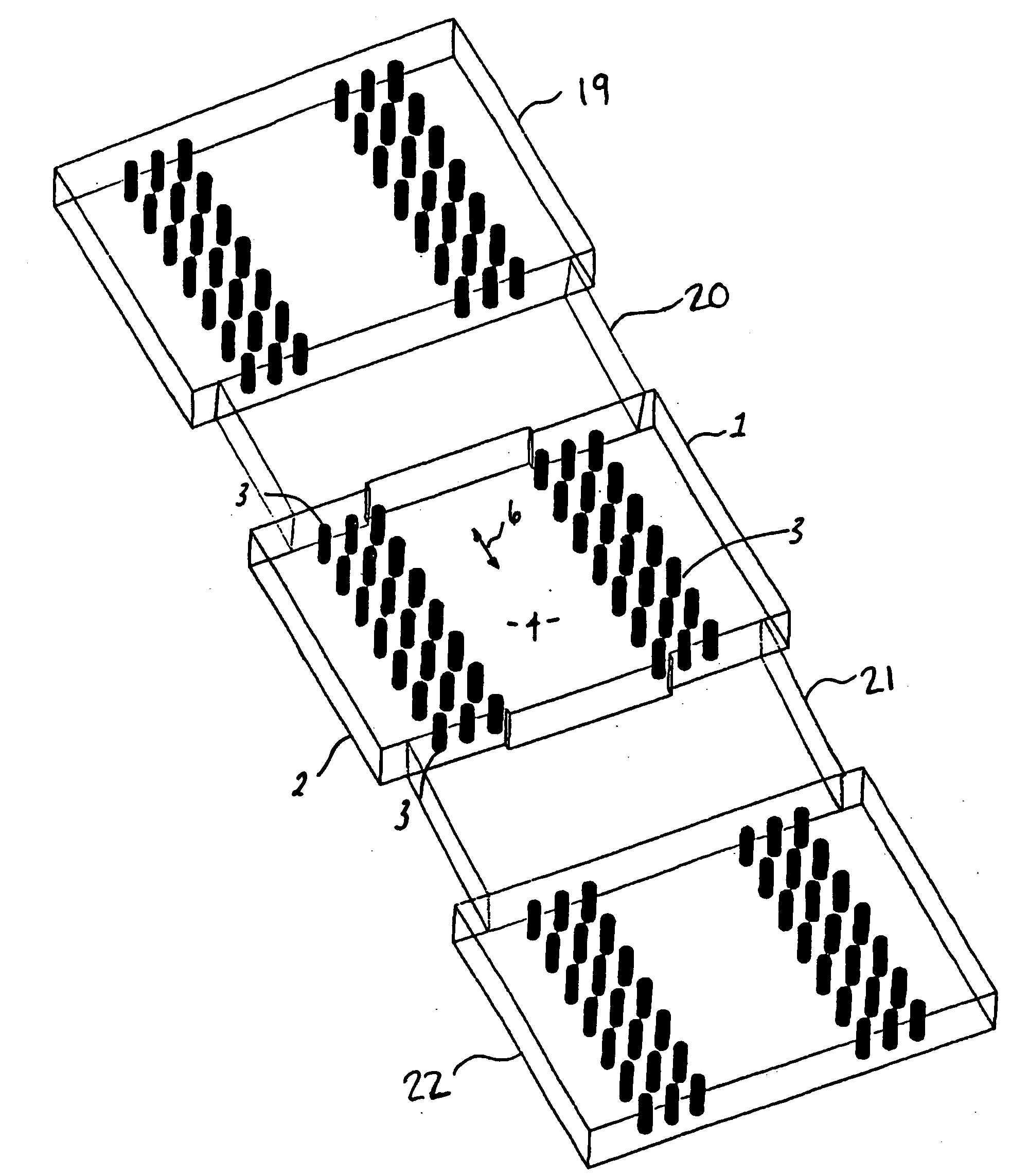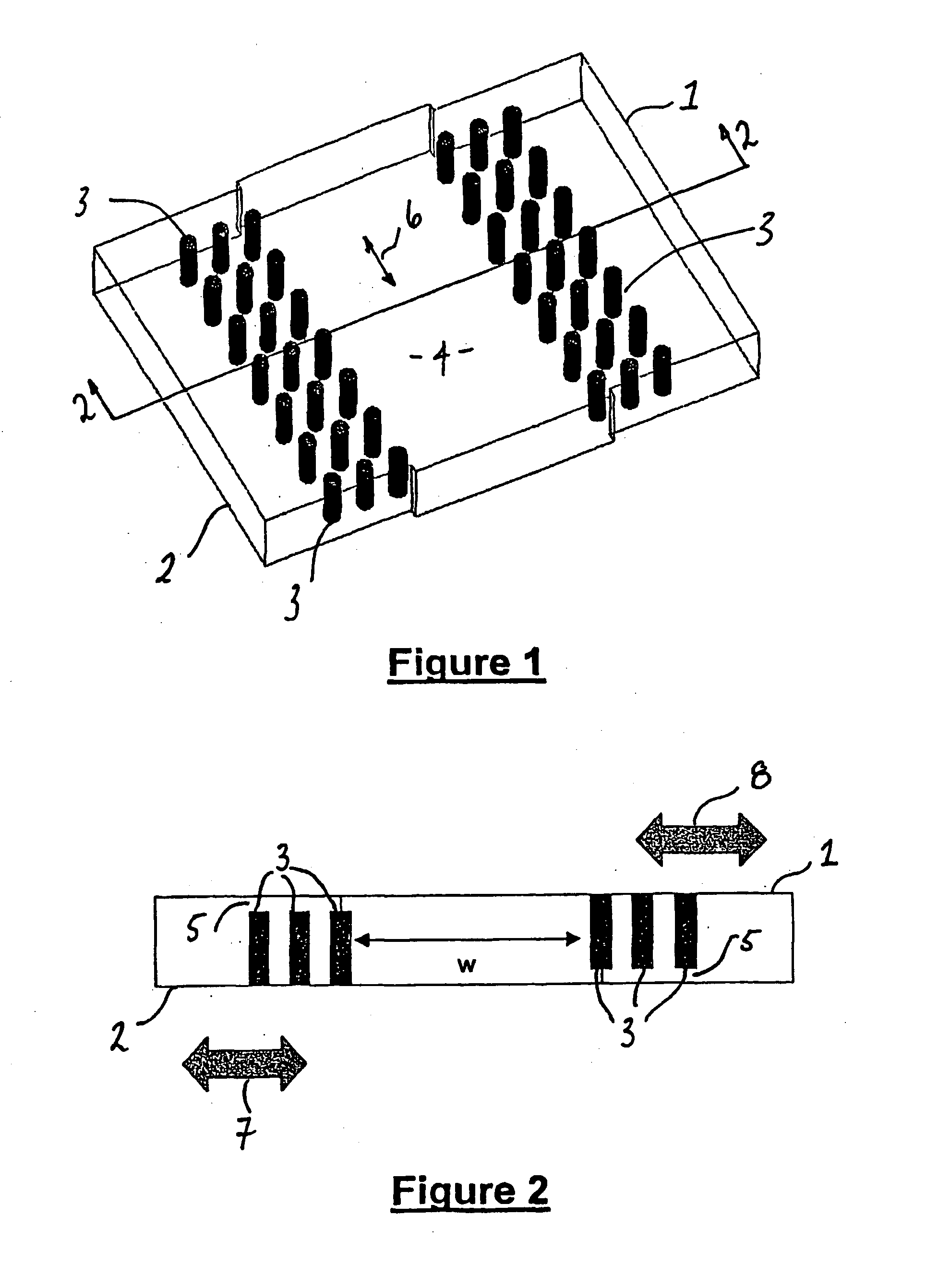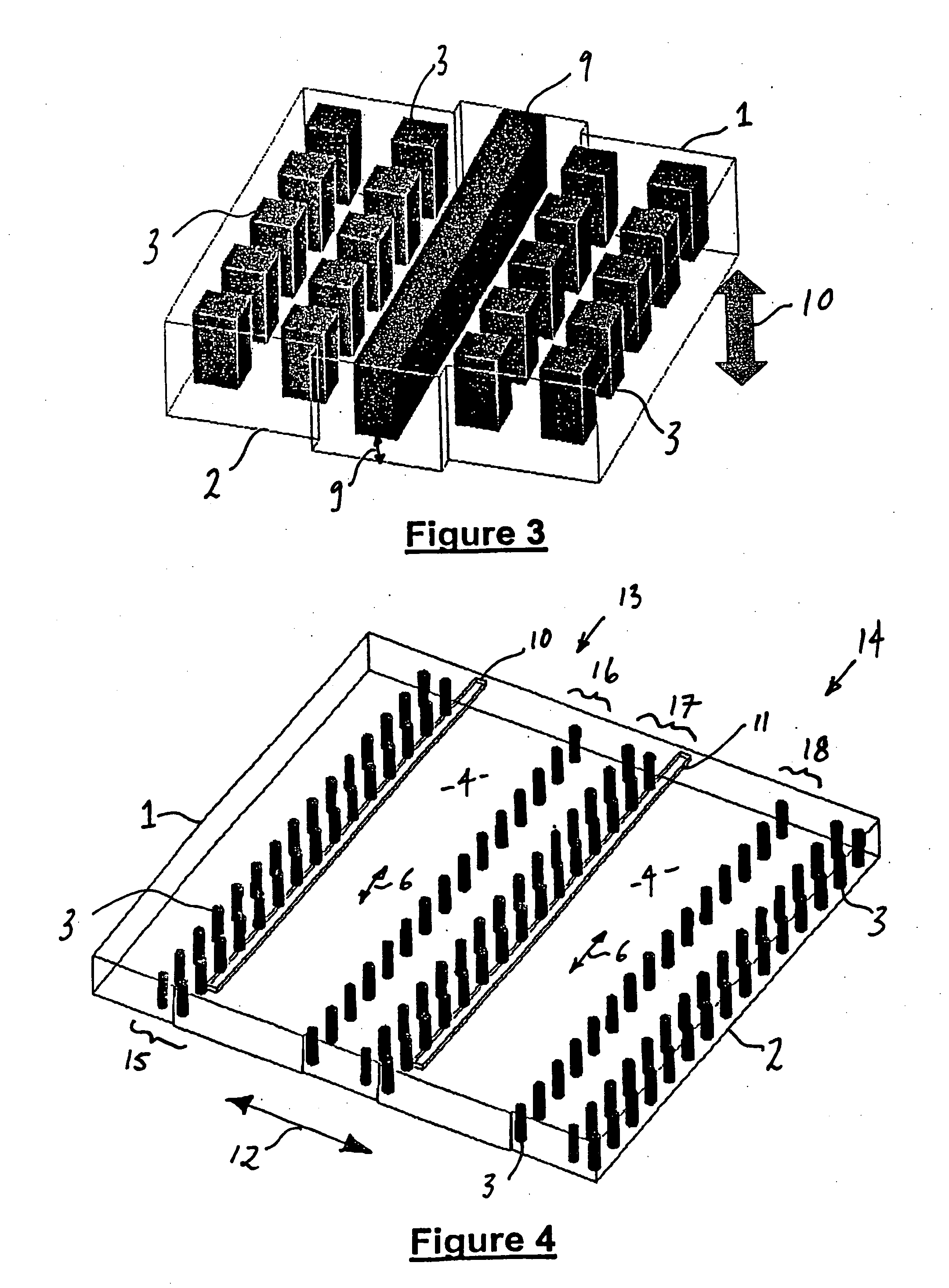Waveguide
a waveguide and waveguide technology, applied in the field of waveguides, can solve the problems of high attenuation, not well suited to volume production, waveguide devices with moving parts, etc., and achieve the effect of preventing the leakage of energy from the waveguid
- Summary
- Abstract
- Description
- Claims
- Application Information
AI Technical Summary
Benefits of technology
Problems solved by technology
Method used
Image
Examples
Embodiment Construction
[0048] With reference to the drawings and in particular FIGS. 1 and 2, a waveguide is shown which includes two electrically conductive plates forming top 1 and bottom 2 ground planes. The ground planes 1,2 are arranged substantially parallel to each other and separated by a series of conductive posts 3. The conductive posts 3 are arranged substantially perpendicular to both of the ground planes 1,2. Ground planes 1,2 and posts 3 may, for example, be metallic or may be made from a metallised plastics material.
[0049] The posts 3 are typically distributed periodically in straight lines in one or more rows on either side of a central, guided wave region 4 which is free of posts and in which electromagnetic energy is guided and confined. The spacing of adjacent posts in a row is not necessarily constant, the distance between adjacent parallel rows is not necessarily the same and the spacing of posts in different rows is also not necessarily the same. However, it is preferred that the po...
PUM
 Login to View More
Login to View More Abstract
Description
Claims
Application Information
 Login to View More
Login to View More - R&D
- Intellectual Property
- Life Sciences
- Materials
- Tech Scout
- Unparalleled Data Quality
- Higher Quality Content
- 60% Fewer Hallucinations
Browse by: Latest US Patents, China's latest patents, Technical Efficacy Thesaurus, Application Domain, Technology Topic, Popular Technical Reports.
© 2025 PatSnap. All rights reserved.Legal|Privacy policy|Modern Slavery Act Transparency Statement|Sitemap|About US| Contact US: help@patsnap.com



